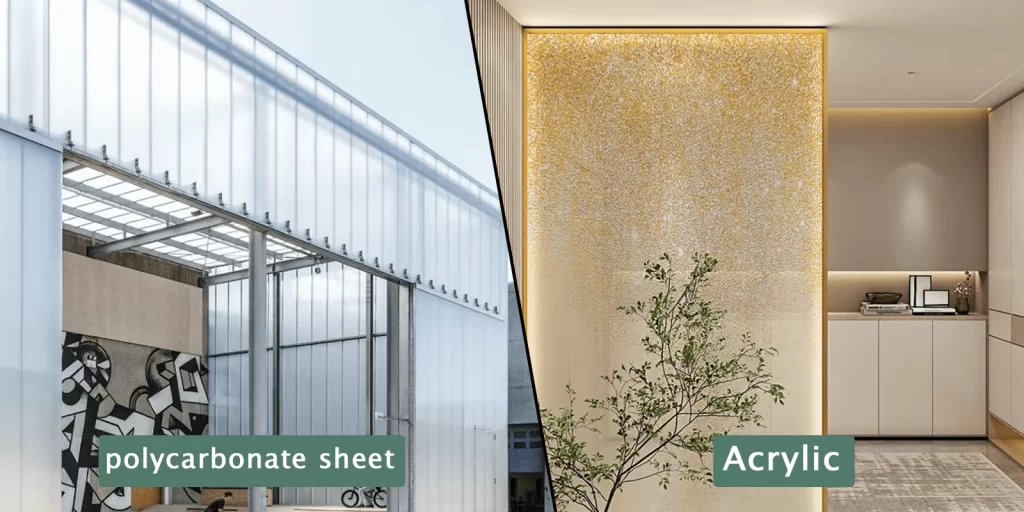
Polycarbonate and acrylic are often used instead of glass for various applications because they are transparent and appear similar. However, these two plastics differ significantly in several respects, so it can be quite a challenge for users to choose one of these materials.
To make it easier for you to select the most suitable material for your project needs, we will share with you some critical differences in the properties of polycarbonate and acrylic. This information lets you make the right decision and achieve long-lasting results.
Find out which material is best for you!
Comparison between Polycarbonate and Acrylic
Resistance
Acrylic and polycarbonate are considered rigid plastics. However, polycarbonate exceeds the strength level of up to 10 times that of acrylic. In addition, acrylic is a very rigid material, and polycarbonate can be purchased in flexible grades. For this reason, in low-stress situations, acrylic cracks more easily.
Light and clarity
Acrylic is of excellent quality, with a light transmittance of 92%. In comparison, polycarbonate has a light transmittance of 88%, although the same clarity can be achieved with the help of a post-processed coating. In addition, in greenhouse applications, the light diffusion properties of polycarbonate benefit vegetation, as it prevents direct sunlight from producing scorching effects.
Climate adaptation
Greenhouses are generally constructed with double-walled plastics, and polycarbonate is the most widely used type of plastic in the agricultural industry, mainly due to its insulation properties. Compared to acrylic, polycarbonate sheets have better insulation properties because they are not affected by ambient temperature and humidity fluctuations.
Cut
Acrylic and polycarbonate can be cut with tools such as saws or milling machines; however, acrylic cuts more easily than polycarbonate. This is because polycarbonate resists the initial thrust of a saw or router in a cut.
Drilling
Acrylic can crack easily if a drill is used near an edge or a drill bit not specially designed for plastic. Polycarbonate, conversely, does not crack when drilled, even if drilled near the edge with a standard drill bit.
Cleaning
The acrylic and polycarbonate are easy to clean, and the best option for cleaning is a microfiber or 100% cotton cloth. However, acrylic has a low chemical resistance that requires more specific cleaners, so use only mild soap and water or a plastic cleaner.
Because polycarbonate has a higher chemical resistance than acrylic, more aggressive cleaners containing chemicals such as ammonia can clean it. However, the plastic mustn’t be cleaned with solvents.
Durability
Acrylic and polycarbonate are weather-resistant materials and can expand and contract with temperature changes without affecting their structure over a long period. In addition, both materials can be scratched, so the use of wool rags and paper towels, which are made of abrasive binding agents, should be avoided.
In general, polycarbonate sheets are more impact-resistant than acrylic and, therefore, less prone to chipping. In addition, thanks to current technology and advanced UV coating, they can last more than ten years in extreme conditions. Another advantage of polycarbonate sheets is that they are low-flammable and self-extinguishing. At the same time, acrylic burns slowly, so they are not recommended for use in areas with fire hazards.
Conclusion
Although polycarbonate and acrylic are excellent alternatives for businesses, polycarbonate sheets undoubtedly provide more significant advantages, as we have analyzed. If you opt for this option, Foshan Songxia New Material experts can manufacture high-quality and low-cost polycarbonate parts.
We invite you to check out what’s included in our polycarbonate boards services: a wide range of capabilities and value-added services for all your requirements.
